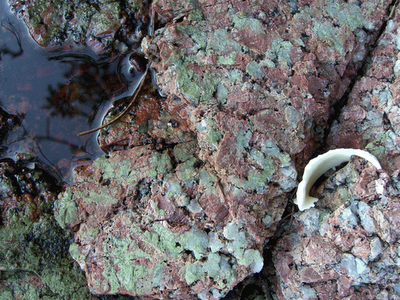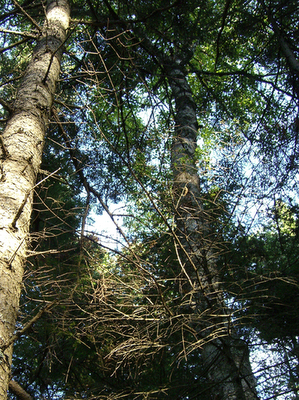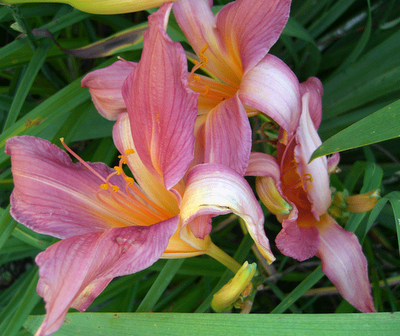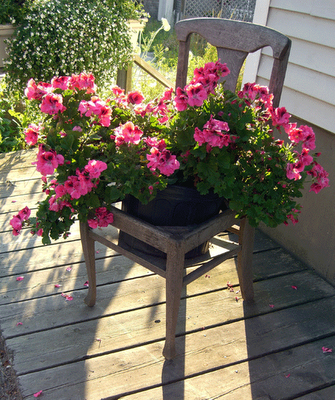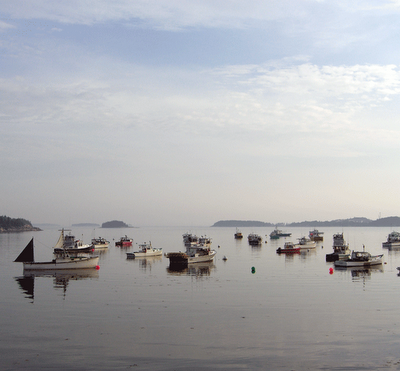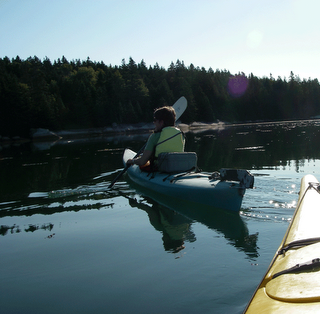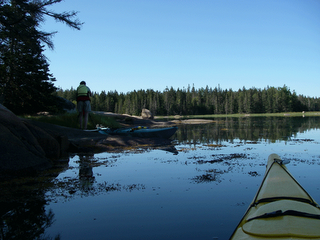 This is a detail from the commission Tim, Michael and Erwin have done for us. We should install some time mid September. Washington Glass School
This is a detail from the commission Tim, Michael and Erwin have done for us. We should install some time mid September. Washington Glass School
Thursday, August 31, 2006
 This is a detail from the commission Tim, Michael and Erwin have done for us. We should install some time mid September. Washington Glass School
This is a detail from the commission Tim, Michael and Erwin have done for us. We should install some time mid September. Washington Glass School
Wednesday, August 30, 2006
Tuesday, August 29, 2006
the first last Monday lunch

we had a delightful lunch at Lavandou, web site here, and have decided to try to get together the last Monday of every month. Just so nice to sit down and catch up with everything.
Sunday, August 27, 2006
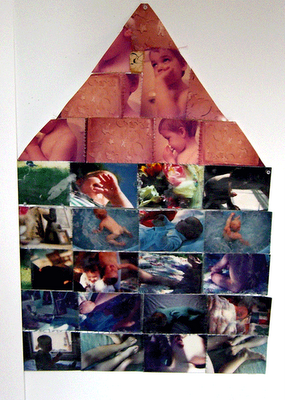 This is one of the pieces I've been working on for the Smith Farm show. Its a work in progress and definitely a little rough around the edges. I first mapped three of these "house" images out at VCCA and then set them aside. Right now I'm sewing the photographs together - then I plan to layer more beeswax and write into them. The show is called "some kind of truth" my truth relates to my sense of longing for my past life when my children were young and our lives were so deliciously entwined.
This is one of the pieces I've been working on for the Smith Farm show. Its a work in progress and definitely a little rough around the edges. I first mapped three of these "house" images out at VCCA and then set them aside. Right now I'm sewing the photographs together - then I plan to layer more beeswax and write into them. The show is called "some kind of truth" my truth relates to my sense of longing for my past life when my children were young and our lives were so deliciously entwined.
Touchstone Gallery
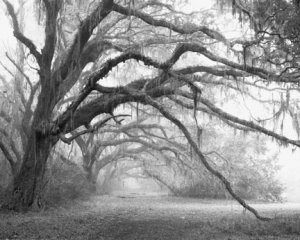
Harvey Kupferberg just exhibited three photographs with us at NIH. He has a show opening at Touchstone Gallery September 8. Below from Touchstone's web site...
Harvey Kupferberg has been a fine arts photographer for many years and has exhibited in numerous photographic competitions. His primary interests are in landscape, and the design components of architecture. The majority of his work has been done in the southeast and southwestern United States. As a trained medical scientist, he excels in the use of black and white film to produce silver gelatin prints, an extension of his professional life. His well-honed technical development skills interact with the creative expression of his photography when he maximizes the visual effect by adjusting film exposure to create his abstract-like images of a scene.
When choosing a scene, he strives to eliminate all but the essential components of the composition. This overarching concept has produced work that emphasizes lines and curves, light and shadow, texture and tone, regardless of whether the subject is architecture or nature. Depth and perspective are demonstrated with exquisite detail.
Harvey’s prints have been exhibited in numerous local and statewide-juried exhibitions. He won first place in the Washington Post’s photographic competition for black and white landscape and waterscape scenes. His photograph “Navajo Arch” won the grand prize in Montgomery County’s Fair in 1989 as well as the Washington Post’s competition.
Opening Reception: Friday, September 8, 6:00 p.m. - 8:30 p.m.
3rd Thursday Gallery Walk: September 21, 6:00 p.m. - 8:00 p.m.
Touchstone's web site here
Saturday, August 26, 2006
Friday, August 25, 2006
Thursday, August 24, 2006
I had some time this morning so I did my situps, stretching a little weights. Had a cup of coffee, decided to take a vitamin and juice. Sat down at the computer with a second cup, and my mouth started to water, throat started to tighten. I ignored it for a few minutes and then thought OMG... I'm going to be sick! just made it to the bathroom in time. No photos tho - so not a pretty sight. it is true, you should not take a vitamin on an empty stomach with juice.
Wednesday, August 23, 2006

another beautiful summer day. Lots going on at work, the kids are all off to school, I even heard from Keriann @ FIT. I'm working hard to get our sculpture at NIH refurbished before the dedication ceremony this fall. And a show of state flowers to design and install for USBG. Their new garden opens Oct 1, it is glorious.
Tuesday, August 22, 2006
Monday, August 21, 2006
interesting post article
 College Argues For the Right To Sell Art Gifts To Raise Capital
College Argues For the Right To Sell Art Gifts To Raise CapitalBy Bravetta Hassell
Washington Post Staff Writer
Wednesday, August 16, 2006; Page C01
Just what obligation does a school have to hold on to its gifts of artwork?
It's a question that Fisk University has been grappling with for months as it seeks to sell two paintings from its Alfred Stieglitz Collection to raise much-needed funds. At the moment, however, its plans have succeeded only in raising the ire of some art lovers.
The Nashville school is awaiting a court ruling on whether it can sell a Georgia O'Keeffe painting and a Marsden Hartley painting, both part of the 101-piece collection, which was donated to the historically black college nearly 60 years ago by Stieglitz's widow -- O'Keeffe herself.
The collection also includes works by such artists as Cézanne, Renoir, Picasso, Arthur Dove and John Marin, as well as some of Stieglitz's photography. According to an IRS filing, Fisk's entire art collection was appraised at $31.4 million in 2002.
"I'm sorry that it has come to this, but I support the president in this decision," Denise Billye Sanders, chairwoman of Fisk's General Alumni Association, says of the move by school President Hazel O'Leary. "We're selling to keep the rest of our collection."
O'Keeffe's "Radiator Building -- Night, New York" and "Painting No. 3" by Hartley could fetch as much as $20 million if sold privately, speculates Gerald Peters, president of the Peters Gallery in Santa Fe, N.M., which has sold Hartley paintings comparable to "No. 3."
"[They] could easily bring in 10 million each," says Peters, predicting that "Radiator Building" could break a record set by Christie's, which sold O'Keeffe's "Calla Lilies With Red Anemone" for $6.1 million in 2001.
Fisk plans to use the funds to construct an academic building, endow professorships and improve the security at the gallery that holds the remaining collection, says O'Leary, a former U.S. secretary of energy.
"When I got here, it was clear to me that in order to manage well, you have to have enough capital," says O'Leary, who's been at Fisk for two years. The school's financial troubles have existed for decades, and because there are 11 Hartley paintings in the Stieglitz collection, "to let one go continues to make sense," she says. "Radiator Building," which she called an "iconoclastic piece," is the more valuable of the collection's two O'Keeffe paintings.
Funds from the sale also would help rebuild the school's endowment, drawn down twice in the four years before O'Leary's arrival, says Fisk spokesman Ken West. The endowment is valued at about $15 million, he says. rest of the article here
Sunday, August 20, 2006
 I spent the afternoon setting up a dedicated art space upstairs. I am part of a group show "Some Kind of Truth" at Smith Farm this November and I have a little one person show next May at the Lee Art Center. Feels good to get everything out and look at it again - and to wake up thinking about making art rather than taking one of the kids to price club.
I spent the afternoon setting up a dedicated art space upstairs. I am part of a group show "Some Kind of Truth" at Smith Farm this November and I have a little one person show next May at the Lee Art Center. Feels good to get everything out and look at it again - and to wake up thinking about making art rather than taking one of the kids to price club.
Saturday, August 19, 2006
Thursday, August 17, 2006
finally! an art related post
Arlington Arts Center
3550 Wilson Boulevard, Arlington, Virginia 22201
August 15 - September 30, 2006
Opening Reception: Friday, September 8, 2006, 6 - 9pm
Gallery Hours: Tuesday through Saturday, 11 - 5
Wednesday, August 16, 2006
Tuesday, August 15, 2006
Sunday, August 13, 2006
hey, thanks!
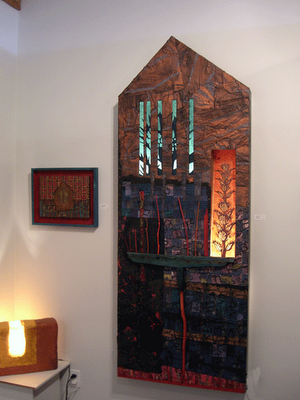
I just found Michael Daugherty's blog. He owns the gallery Isalos Fine Art (Isalos: from greek = waterline). Barbara's apt in Maine was above the gallery. He gave me a very nice shout out. See his blog here.
This was some really lovely work he had on exhibit for First Friday when I was there.
Saturday, August 12, 2006
Happy Birthday Gretchen!
 It's Gretchen's (sissy extraordinaire) birthday so we are taking her out to dinner tonight. Just crazy running around the last two days, SAH gave KT a nice goodby luncheon and we had a chance to meet Andrea and celebrate Sarah's bday. SAH board conference call yesterday and lots to do at NIH with Crystal on vacation. Cooked beef stew for Gabe night before last and Raph's favorite stuffed peppers last night. Ray is already home from Kalamazoo with what looks like, from peeking out the window, a nice new(er) green van. Running around trying to scrape up 4000+ in cash with the banks closed was something out of "I love Lucy". We are throwing a goodby party for Raph on Sunday then he's off to CNU on Tuesday.
It's Gretchen's (sissy extraordinaire) birthday so we are taking her out to dinner tonight. Just crazy running around the last two days, SAH gave KT a nice goodby luncheon and we had a chance to meet Andrea and celebrate Sarah's bday. SAH board conference call yesterday and lots to do at NIH with Crystal on vacation. Cooked beef stew for Gabe night before last and Raph's favorite stuffed peppers last night. Ray is already home from Kalamazoo with what looks like, from peeking out the window, a nice new(er) green van. Running around trying to scrape up 4000+ in cash with the banks closed was something out of "I love Lucy". We are throwing a goodby party for Raph on Sunday then he's off to CNU on Tuesday.One day soon I'll get back to talkng about art.
Thursday, August 10, 2006
Wednesday, August 09, 2006
Horrific day of travel. Flight delayed again until 12:45 then again until 3. They finally put is in a cab where we drove 85 miles to Augusta Maine. (thankfully, I was afraid the guy at the desk was suggesting I fly to Augusta GA then on to Boston and home to DC!). We learned from the cab driver that 1. This happens all the time 2. We could have asked to be driven to Boston 3. Maine State troopers drive unmarked pickup trucks. We got to the airport - met up with some other fellow travelers who were on the 7:44 flight. I guess because it was a tiny plane with an open cockpit and their security equipment was not all that sophisticated they had to open every suitcase, cosmtetic bag, camera bag, purse, backpack and take every single item out and examine. Then we suffered through being personally searched. Finally we get on this tiny rickey old 2-seats-across plane and I'm literally in fear of my life. One propeller is moving for like 5 minutes before the other one starts and I can see out the window how much the engine is shaking up and down. We are flying through clouds so its a bumpy ride, really Pretty scary - we arrive in Boston only to miss my connecting flight by about 10 minutes. So I wait an hour and get home around 6pm. I'm waiting for Ray to pick me up when a man in a wheel chair asks to borrow my cell. His is out of batteries and he needs to call his ride. Ray arrives we load my things in the car and the man in the wheel chair won't give me back my phone. I actually have to go up to a police man and ask him to help. He has to stand over the man and ask 4 or 5 times before he finally returns it to me. So I get home and its as if I never left, (except the back of the house is nicely painted) Gabe and I go to the grocery and make dinner. I've lots of pictures but on top of everything else I've messed up the settings on my internet connection.
Tuesday, August 08, 2006
Here I am once again stuck at an airport. My flight is the only flight in the entire airport that is delayed. And it's delayed 5 hours. The Sheraton hotel nicely is letting me sit in the lobby to use their internet. The only problem is the history channel and loud music overhead are driving me a little crazy.
Monday, August 07, 2006
Sunday, August 06, 2006

we went kayaking this morning. Just glorious out. We launched from Webb Cove where I rented a boat then went around Whitmore Neck on to Sheep Island and back home. Barbara estimates about 5 miles, we were out about 4 hours. with one stop on Whitmore Neck so Barbara could photograph. My waterproof camera worked great as you can see. Only problem I forgot to clean the lens when I was playing with it actually underwater. Ocean kayaking is so much easier than whitewater. a much more stable boat and a rudder you can move with your feet. Although apparently only girly girls use the rudder - I am such a girl.
Later I post about our adventures at Barred Island yesterday.
Saturday, August 05, 2006
Friday, August 04, 2006
Castine

Castine, Maine is one of the oldest communities in North America. It has been occupied continuously since the early 1600s as the site of numerous trading posts, forts, missions and permanent settlements of France, Holland, England and colonial America. Before 1613, and during the course of its long history, Castine has also been home to several nations of Native Americans. What is now known as the Castine peninsula appears on a 1612 chart that geographer and explorer Samuel de Champlain submitted to King Henry IV of France. His enthusiasm for the region led to the establishment of a French trading post in 1613. Its location is described in French records as being on the eastern side of what is now called Penobscot Bay. The French called the peninsula Pentagoet (later Castine). In 1614 Captain John Smith charted this area of the coast for British interests. Following the signing of the Breda Treaty in 1667, which ended the war between France and England, Castine and the surrounding territory was deeded to the French. A French officer, Jean Vincent d'Abbadie de St. Castin, obtained a grant from the King of France for land in the vicinity of Pentagoet and the peninsula that would eventually bear his name. The Dutch briefly occupied Castine twice, once in 1674 and again in 1676, when they bombarded it from the bay. After coming ashore, the Dutch turned the guns of Fort Pentagoet on its walls and buildings, destroying it completely. During the early 18th century, life in Castine was relatively tranquil. As England's relationship with the liberal American colonists continued to deteriorate, the British decided in 1779 to once again rebuild and occupy Castine's forts, recognizing the area's strategic location and its importance as a convenient source of timber for masts and other supplies. When word of the occupation reached the Massachusetts Board of War, 18 armed vessels and 24 transports carrying 1,000 ill-trained militiamen and 400 marines sailed to Castine to recapture it. Commodore Dudley Saltonstall of New Haven, Connecticut commanded the naval force. Brigadier General Solomon Lovell was in charge of land forces, with General Peleg Wadsworth as his second-in-command, and Colonel Paul Revere as the ordinance officer. What followed is still considered by some historians to be the worst naval defeat in United States history. The American fleet sat in the Penobscot Bay for several weeks deciding what to do. This gave the superior British fleet time to make their way to Castine from Halifax, Nova Scotia. It advanced on the American ships, forcing them to retreat up the Penobscot River. Once bottled up in the river, Saltonstall had no choice but to scuttle his ships, forcing his troops to make their way on foot back to Massachusetts. Saltonstall and Revere were court-martialed; the former was cashiered, the latter exonerated. After the signing of the Treaty of Paris which ended the Revolutionary War, the boundary between Canada and the United States was set at the St.Croix River rather than at the Penobscot. Later, when the War of 1812 broke out, American troops were garrisoned in Castine but were unable to defend the town against a superior British force. By 1814, Castine once again was under the British flag. A year later the British evacuated the region and Castine became an American town once and for all. In the years that followed, 121 ships, many owned and commanded by local people, were launched from Castine shipyards. Local ropewalks, sail lofts and ship chandlers provided all necessary goods and services for maritime trade that was carried on primarily with the West Indies and England. A salt depository supplied the Grand Banks fishing fleets. At times, hundreds of ships were anchored in Castine Harbor. The Civil War, the decrease in the number of sailing ships and the growth of railroads signaled the end of Castine's greatest era of prosperity. However, as the end of the 19th century drew to a close, Castine was once again rediscovered. As in the past the discoverers approached by water, this time aboard steamboats. These were the summer people, or "rusticators" as the natives called them. Many built elaborate summer cottages, as well as less pretentious log cabins. In 1897 a golf course was added to Castine's summer attractions, designed by the well-known Scottish course designer Willie Parks, Jr. During the 1900s, Castine continued to flourish as a summer community until the Maine Maritime Academy was founded in 1942, and then the town emerged as a viable year-round community. In 1867, the Eastern State Normal School opened its doors at The Abbott School on the Town Common. In 1873 it moved into two large brick buildings in town where it continued to function until 1942. Since then, the Maine Maritime Academy has occupied these buildings. In the meantime, The Abbott School was used as the Castine High School until 1961, when declining population forced its closing. In 1994, the Castine Historical Society purchased The Abbott School. This handsome, three-story building of classic, Italianate design has been completely restored and now serves as the headquarters of the Castine Historical Society.

Castine, a small coastal village of approximately 7.9 square miles, is located on a peninsula in the East Penobscot Bay Region of Maine, 1 hour from Bangor, and 1.25 hours from Camden and from Bar Harbor. The town, on the National Register of Historic Places, consists of two distinct geographic areas referred to as the Village and "off neck," a narrow strip of land that separates the Bagaduce River on one side from the Penobscot River on the other. More than 100 historic markers can be found in this town characterized by its 18th century architecture. Major landmarks include Fort George, built by the British in 1779 and partially restored as a state memorial, and Fort Madison, earthwork remnants built by the Americans in 1811, occupied by the British during the War of 1812 and reconstructed during the American Civil War. The year-round population is roughly 1,300 including 700 college students attending Maine Maritime Academy. With summer residents, and visitors by land and sea, the population

at least doubles from Memorial Day to Labor Day.
This from Castine's web site.















